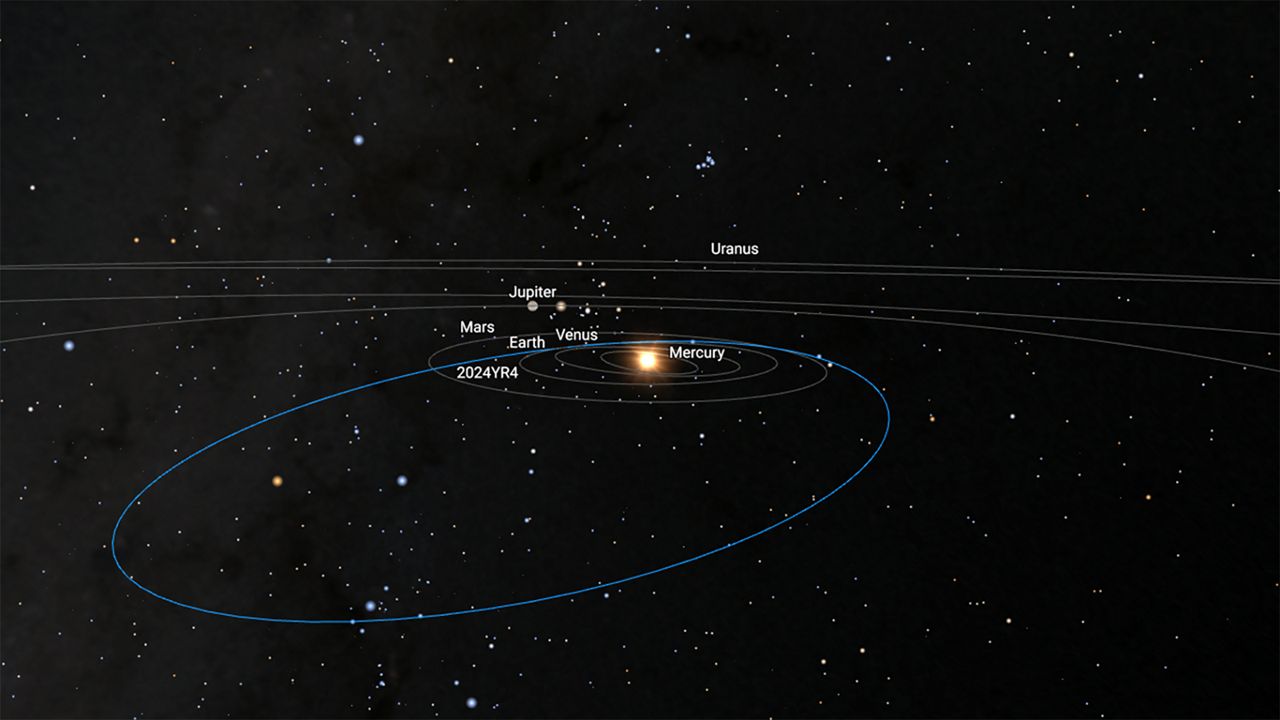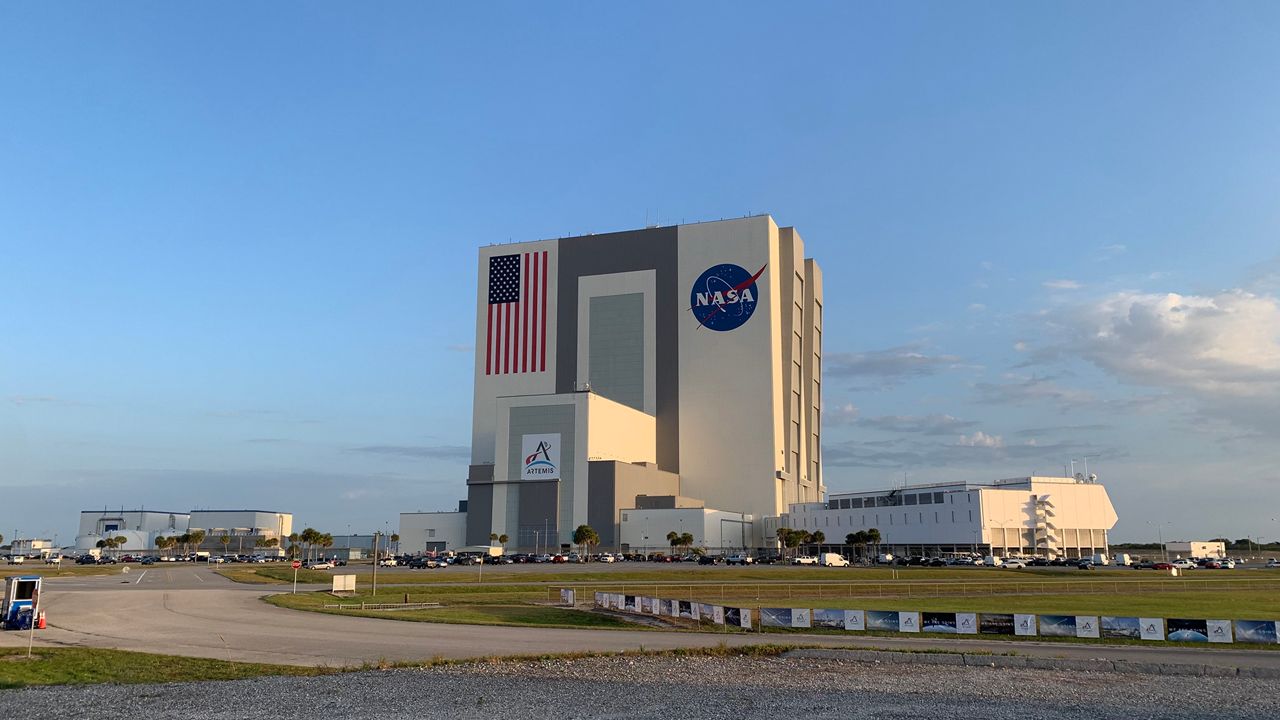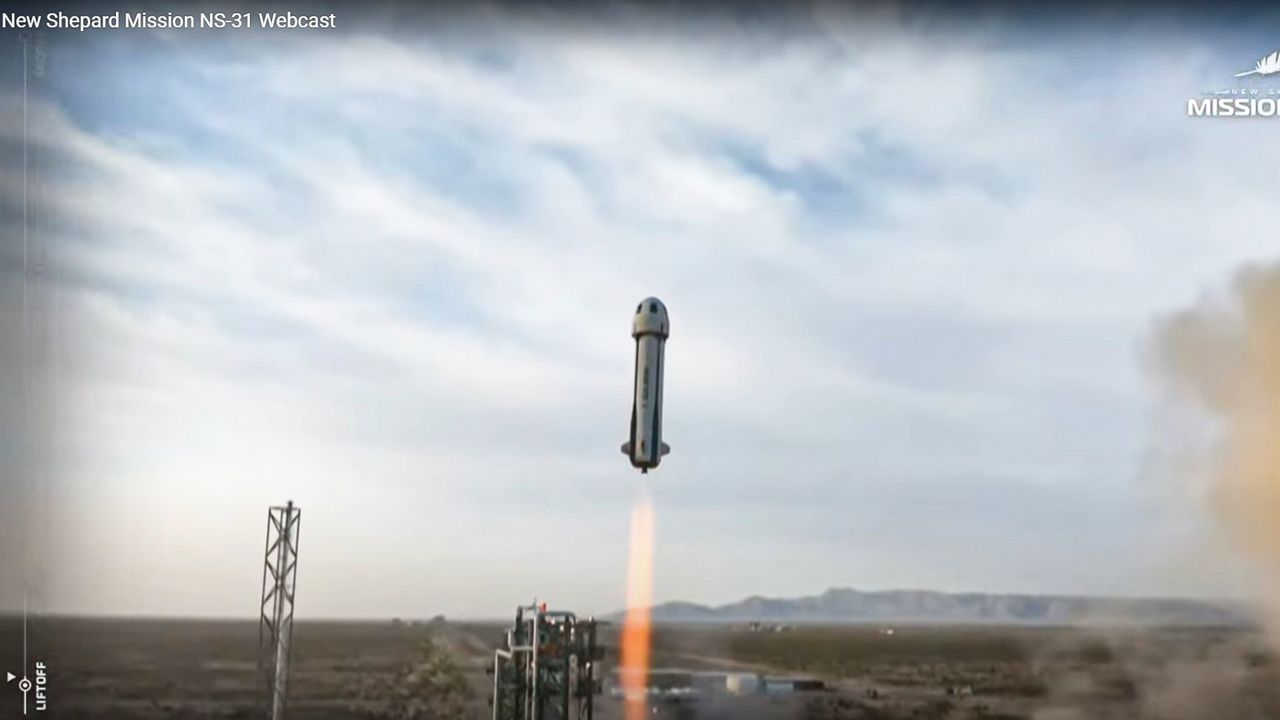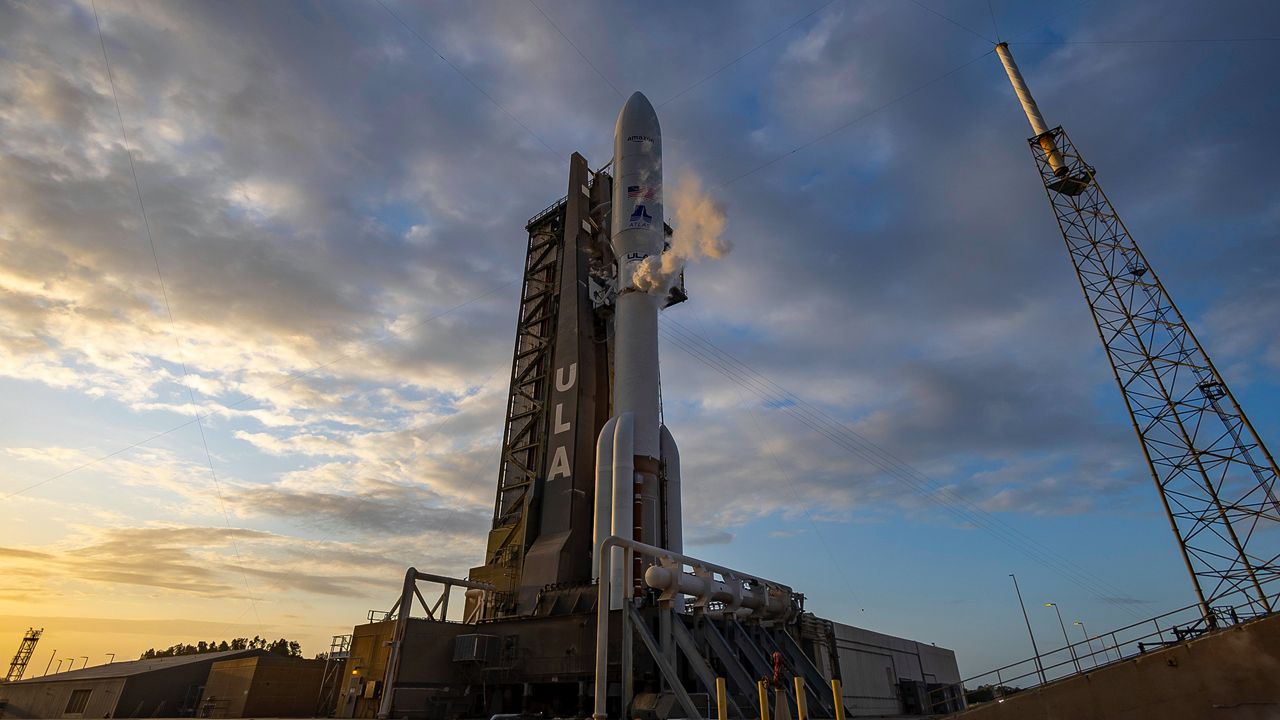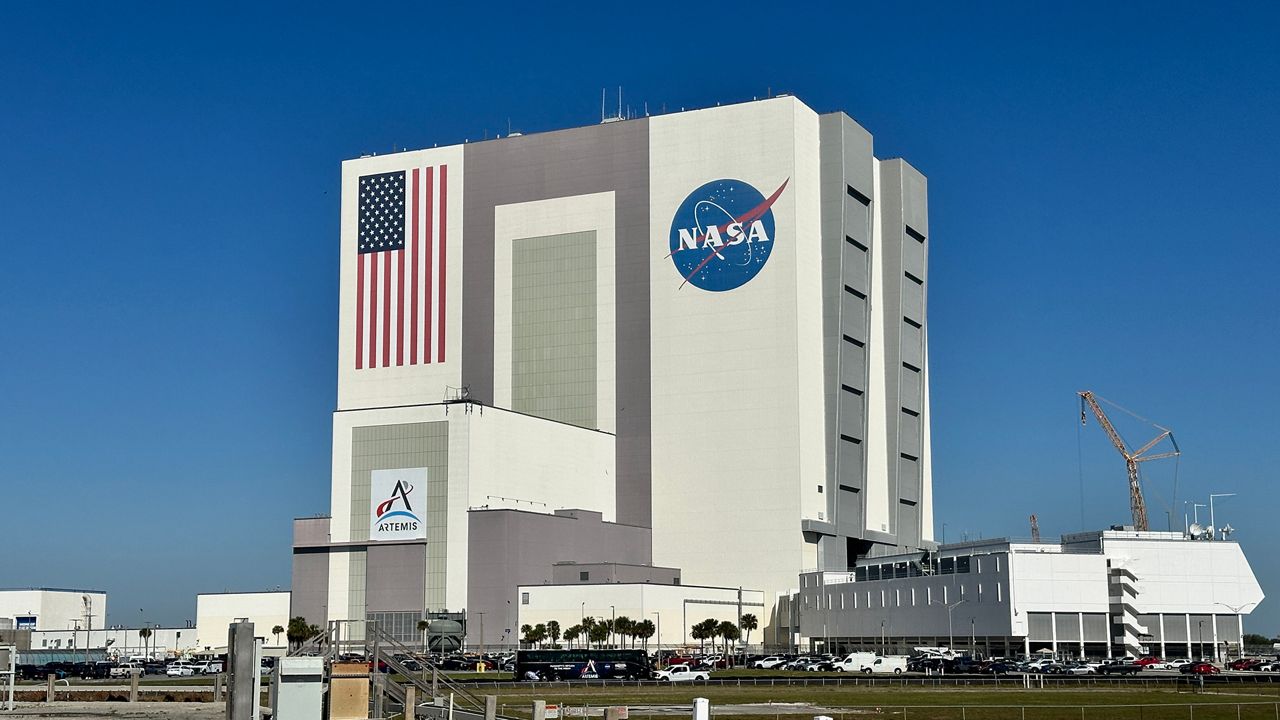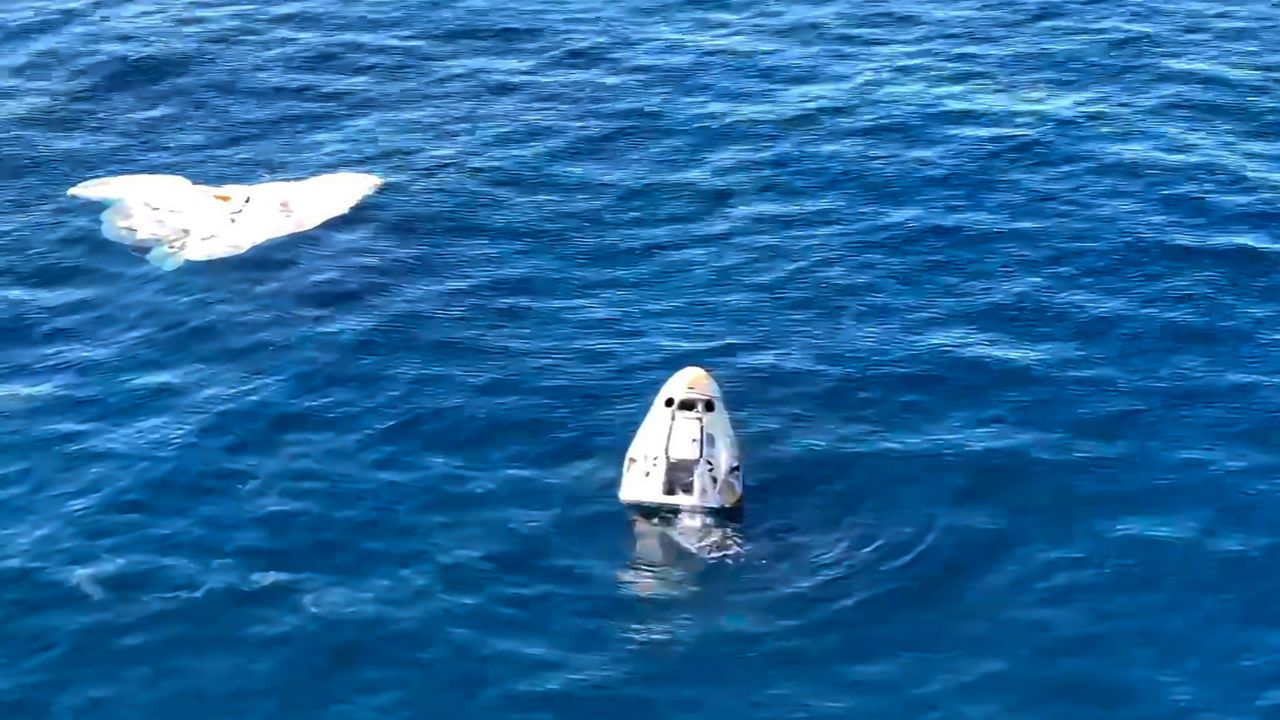CAPE CANAVERAL SPACE FORCE STATION — NASA and other agencies are studying a large asteroid that was discovered in 2024.
While Asteroid 2024 YRA has a minute chance of hitting Earth in seven years, the co-lead of NASA's DART mission says a small spacecraft could deflect the space rock's course.
What You Need To Know
- Asteroid 2024 YR4 currently has small chance of striking the Earth on Wednesday, Dec. 22, 2032
- The space rock is between 131 feet (40 meters) to 295 feet (90 meters) or a little less than the Statue of Liberty's height
- 🔻Scroll down to read the International Asteroid Warning Network report on the asteroid🔻
Asteroid 2024 YR4 currently has a 2.3% chance of striking the Earth on Wednesday, Dec. 22, 2032, according to experts from NASA and the International Asteroid Warning Network (IAWN).
In an IAWN report that came out late last month, the probability of the asteroid — estimated to be between 131 feet (40 meters) to 295 feet (90 meters) wide — hitting Earth was at 1.3%, and then at 1.6%, and on Thursday morning, Feb. 6, it increased to 1.9%.
However, later on Thursday afternoon, the impact probability increased to 2.3%, stated NASA’s Center for Near Earth Object Studies.
The asteroid was discovered in December 2024 and its designation is YR4.
IAWN stated that this near-Earth asteroid will still be observable through early April 2025, but then its orbit will take it away from Earth, making it too faint to be seen until June 2028.
The exact size of Asteroid 2024 YR4 cannot be determined until it comes within radar range in 2032.
According to the Torino Impact Hazard Scale, used to measure the impact predictions of asteroids and comets, this new one ranks in the level 3 of the yellow zone or “meriting the attention by astronomers,” stated the European Space Agency.
Experts will need more time to study the asteroid’s path before deciding its exact trajectory.
However, the co-lead of NASA’s Double Asteroid Redirection Test (DART) mission says there should hopefully be nothing to worry about.
The reason for the DART mission
In 2022, the DART spacecraft was successfully crashed into the asteroid Dimorphos. The purpose? To change its orbit around the larger asteroid Didymos in our solar system.
In fact, it was a bigger success than it was originally predicted. Before the crash, Dr. Andy Rivkin, the DART investigation team co-lead at the Johns Hopkins Applied Physics Laboratory, shared with Spectrum News that, “Dimorphos currently takes a bit less than 12 hours to orbit Didymos. We expect DART to change that period by about 10 minutes, though it could be a little less or much more.”
But afterwards, it turned out the tiny DART spacecraft actually changed Dimorphos’ orbit by 32 minutes. (And by tiny, it was 6.2 feet/1.9 meters in length and 5.9 feet/1.8 meters in width.)
In the latest interview, Rivkin explained to Spectrum News that because Asteroid 2024 YR4 is smaller than Dimorphos (which is 525 feet/160 meters in diameter), a second DART spacecraft should deflect the space rock.
“As you note, 2024 YR4 is smaller than Dimorphos, and is probably 10% as massive as Dimorphos or less. A kinetic impactor like DART is in principle well-suited to handle an object this size. The international protocols that are in place and the exercises that have been run give us some guidelines to follow, and I would expect that the people who specialize in spacecraft and trajectory design are already thinking about the kinds of missions that would get to 2024 YR4 at the right time for a deflection, and when we would need to launch them,” he stated in an email.
Letting it hit the Earth may not be a big deal
Even if Asteroid 2024 YR4 is at its biggest width, which is a little less than the Statue of Liberty, having it strike the Earth will not cause a global catastrophe or even regional damage, said Rivkin, as he shared examples of space rocks crashing into the Earth.
An object about the estimated size of 2024 YR4 hit the Tunguska region of Siberia in 1908, and felled trees in an area of about 2000 square kilometers. An object about 5-10% the estimated mass of 2024 YR4 hit the Siberian city of Chelyabinsk in 2013 and broke windows throughout the city, injuring 1000 people unlucky enough to be near a closed window at the time. Depending on the exact size of 2024 YR4, whether it’s more like a single rock or more of a rubble pile like Dimorphos, and the angle of entry, the estimated damage could range from only broken windows throughout the area up to the collapse of wood-frame buildings for a radius of 10-15 km and broken windows out to 25 or so km. That would basically cover all of New York City and into parts of the nearby suburbs on Long Island, New Jersey, and up the Hudson Valley.
Rivkin also said the system that we have in place to find and track asteroids is working.
“There are additional capabilities that are coming on line as the Vera Rubin Observatory and then the NEO Surveyor spacecraft will begin operations. The planetary defense community contributed a few years ago to an overall assessment of planetary science priorities, and I look forward to seeing them carried out over the next decade,” he said.






